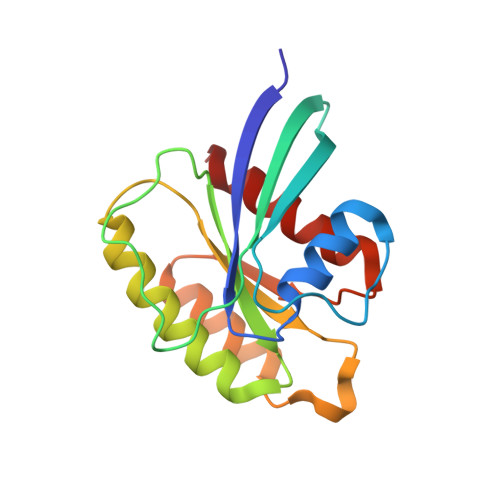An Autoinhibited Noncanonical Mechanism of GTP Hydrolysis by Rheb Maintains mTORC1 Homeostasis.
Mazhab-Jafari, M.T., Marshall, C.B., Ishiyama, N., Ho, J., Di Palma, V., Stambolic, V., Ikura, M.(2012) Structure 20: 1528-1539
- PubMed: 22819219
- DOI: https://doi.org/10.1016/j.str.2012.06.013
- Primary Citation of Related Structures:
3SEA - PubMed Abstract:
Rheb, an activator of mammalian target of rapamycin (mTOR), displays low intrinsic GTPase activity favoring the biologically activated, GTP-bound state. We identified a Rheb mutation (Y35A) that increases its intrinsic nucleotide hydrolysis activity ∼10-fold, and solved structures of both its active and inactive forms, revealing an unexpected mechanism of GTP hydrolysis involving Asp65 in switch II and Thr38 in switch I. In the wild-type protein this noncanonical mechanism is markedly inhibited by Tyr35, which constrains the active site conformation, restricting the access of the catalytic Asp65 to the nucleotide-binding pocket. Rheb Y35A mimics the enthalpic and entropic changes associated with GTP hydrolysis elicited by the GTPase-activating protein (GAP) TSC2, and is insensitive to further TSC2 stimulation. Overexpression of Rheb Y35A impaired the regulation of mTORC1 signaling by growth factor availability. We demonstrate that the opposing functions of Tyr35 in the intrinsic and GAP-stimulated GTP catalysis are critical for optimal mTORC1 regulation.
Organizational Affiliation:
Department of Medical Biophysics, University of Toronto, Toronto, Ontario M5G 2M9, Canada.


















